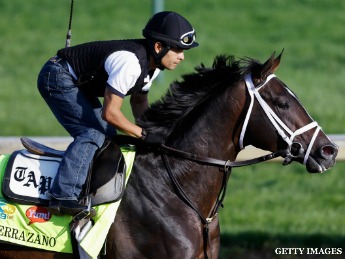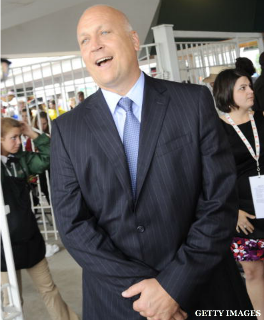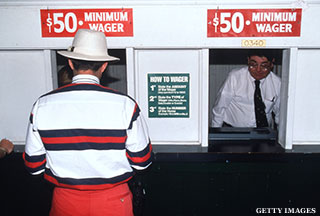
If you think horse racing experts and handicappers have one up on you this weekend, think again.
The Kentucky Derby, annually held on the first Saturday in May, is the hardest horse race in America to handicap for about a million reasons.
For starters, the Derby features the largest field (20) we'll see all year in a major thoroughbred race. (For the non-horse racing fans, 10 is generally considered a big field for a race so with 20 things get crowded, fast -- kind of like the Yankees' injury report.)
As 3-year-olds, almost all of the horses have raced less than a handful of times in their brief career. All will be racing the mile and a quarter length for the first time in front of 165,000 high-spirited spectators at Churchill Downs screaming their heads off.
I could go on. And on. And on.
But for those planning on throwing a few bucks down, we've come up with a simple and succinct handicapping guide for your betting pleasure. Follow these guidelines and reap the rewards:
DO pick a horse based strictly on its name, post position or any other ridiculous connection you have to it.
The more obscure the better.
One friend will often pick winners based on how closely the name relates to former flames and professional dancers of the night. He does just as well as my other friend who legitimately knows the horses.

You want serendipity at its finest? Look no further than Cal Ripken, Jr.
The Baseball Hall of Famer regularly attends the Kentucky Derby and in 2009 he threw down an undisclosed amount on the lightly regarded Mine That Bird. With jockey Calvin Borel on board, the long shot from post No. 8 (his old number) came from dead last to shock the world as the race’s second biggest upset winner at 50-1.
Bird, Calvin, No. 8. I hope he bet the mortgage.
DON'T pick a horse starting from the outside.
Horses in one of the first 10 post positions have won exponentially more than those in the last 10. Why? Horses starting on the outside have to cover a lot of ground, and exert a ton of energy, just to get in position to contend. Then they have to have something left for a late kick. It's a lot to ask. Since 1900, post positions 17-20 have only produced four winners. Thanks for trying, Will Take Charge, Frac Daddy, Java's War and Vyjack.
DO pick the horse with the biggest rear.
One Sunday at Saratoga a few summers ago, a friend of a friend, who rode horses growing up, suggested we add this standard to our handicapping repertoire. Why? I don't remember. Maybe it was something about the bigger the rear the stronger the kick. At least to me that makes sense. But I'm thankful she tipped us off. This policy usually is better suited for visits to the track but can be adapted for TV viewing. Most notably, the tip came in rather handy during the 2011 Kentucky Oaks, even while watching from the comfort of home. Plum Pretty had the most robust rear end in the field, and the Bob Baffert trained filly paid a handsome $14.60 for the win.

DON'T pick a horse that hasn't raced as a 2-year old.
We're looking at you, Verrazano. Apollo, back in 1882, was the last horse to win the Derby without racing as a 2-year-old.
DO pick one of Todd Pletcher’s horses.
While the top trainer in the game has only won the Derby once, he has five ready to race. So do the math.
As for my pick Saturday? I’m taking Verrazano, one of the favorites. I realize I just went against one of my rules, and it’s boring to pick favorites, but he gets the nod for two reasons.
1. He was named after the bridge spanning Brooklyn and Staten Island which I’ve crossed more times than I can count. And at $15 a pop I’ve practically paid for its maintenance.
2. Verrazano is trained by Pletcher.
Feel free to send me a tip if you win.
-- Follow Adam Caparell on Twitter @AdamCaparell.




